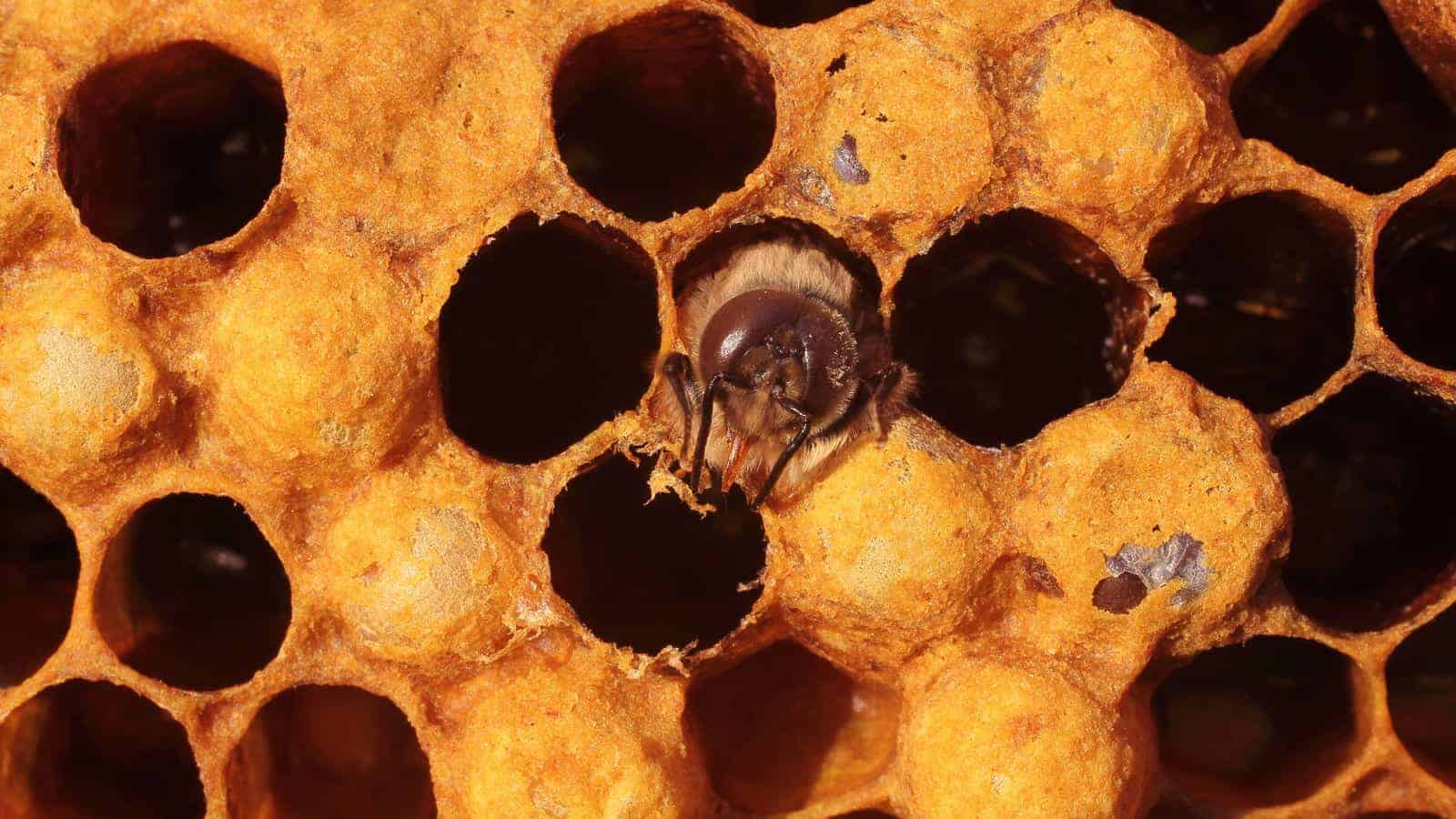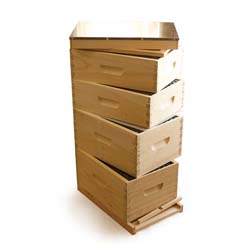Why Drones Are Necessary
Have you ever put much thought into the male honey bee? We hear so much about the queen and worker bees, but what about their important male counterpart? The drone is a fascinating creature from his birth to mating to death. The last two – mating and death – are often very close in time, as we will see.
Drones are the larger bees hanging around hives. They live there during the spring and summer but regularly leave to find Drone Congregation Areas (DCAs), in the hope of being part of a mating flight.
The primary focus for a drone is to mate with a queen. He waits high above the ground in the DCA. If a queen flies only slightly outside of the radar of this congregating area, she will go undetected. However, if she flies into the DCA and is noticed by a drone there’s a chance of a mating encounter.
During this mating activity, hundreds or even thousands of male bees will compete to mate with a queen. They don’t fight. They simply see who can fly closest to successfully mate.
When you become familiar with the somewhat narrower role of the drone (as compared to the worker, at least) it is tempting to consider him the most ineffective and unhelpful bee in the hive. However, the drone offers something absolutely essential to the future of bees – genetic diversity.
This is a fundamental requirement for any successful colony. A queen only mates during one brief period in her early life, over the course of a small number of mating flights. She will mate with drones from numerous colonies, which broadens the genetic pool. This generally has positive benefits, such as a greater ability to resist disease.
Drones are often considered “layabouts” when it comes to working around the hive. In comparison to the furious activity of worker bees, there is a grain of truth to this! However, when temperatures rise in the hive all bees, including drones, may help with the cooling effort by flapping their wings.
Drones serve a purpose to beekeepers as well. When you start seeing drones in the early spring it is important to take note, because swarm season has begun. Queens will not leave their hives if there is no way for them to mate. However, when you see drones appear this means she has someone with which to mate and will begin looking to start her own family.
Anatomy of a Drone
Drones are easy to spot because of their unique appearance. Drone honey bees weigh about as much as the queen bee but have some clear differences.
The drone is stumpier than the queen. He has a thick abdomen and long legs, though you can’t tell that so easily because his stomach hides them.
His stomach is more of a box shape than workers or the queen and his head is very round. Because of the round shape of his head, his eyes seem closer.
Drones have much larger eyes, which is their most distinguishing factor. A drone’s wings are also very large and cover his stomach completely.
As mentioned earlier, the drone’s purpose is to mate with a queen. He has an appendage tucked within him that he will protrude when mating with a queen.
How Drones Are Born
From Egg to Birth
The queen bases her fertilization decisions upon the size of the cell built by workers. This, in turn, is determined by the hive’s need for each caste, at any one point in time. Drone cells are larger, so the queen knows to lay unfertilized eggs there.
It should also be noted that drones have a grandfather, but no father. Since drones come from an unfertilized egg, they only receive their genetic components from the queen. Yet, because the queen is female, her own egg was fertilized so she had a father – the drone’s grandfather.
Once any egg is laid and becomes a larva, workers will feed it royal jelly. Drones and worker bees only receive royal jelly for the first 2-3 days. This ensures they get the protein needed to kick start their development. After the third day, they are fed bee bread, which is a hearty mixture of honey and pollen. After a drone’s development through larva and pupa stages is complete – in 24 days – it will hatch.
Drone Cells
How do you recognize a drone cell? It is pretty easy.
Drone cells are generally laid in proximity to each other, usually towards the bottom of the frame. A drone cell is larger in diameter and the cap appears higher and more rounded at the top, in comparison to a worker bee cell.
As a beekeeper, it is important to keep a close eye on drone brood. Mites prefer to feed on drones because they take longer to hatch and mites love the comfort – and easier food source – of the capped cell. In fact, drone cells also take a little longer to be capped, so this gives the mites a longer period to get into the cell and reproduce.
Drone cells are shaped like bullets. The image below illustrates this – note the cells around the drone that is hatching, as well as the size of his eyes.
Reproductive Role and Genetic Diversity
The drone lives for a successful mating session, but he offers more than the ability to mate with a single queen. As we have seen, drones mating with queens offers the essential benefit of genetic diversity.
Female honey bees have a total of 32 chromosomes, half of which come from the queen and half from the sperm of a drone. By comparison, the drone only has 16 chromosomes. When he releases sperm, he provides all of his genetics to the future (possible) females.
For a hive to have a greater chance of being strong and resilient, the queen mates with multiple drones for greater sperm selection. The 10-20 drones that succeed in mating with a queen must compete with hundreds or thousands of other drones, depending upon the population at the drone congregating area.
See a queen mating flight in action here…
End of Life for Drone Bees
Death by Mating
When a drone mates with a queen and releases his semen, it happens with such force that his endophallus is ripped from his abdomen. When his abdomen rips open he usually dies shortly after.
Kicked Out of the Hive
You might think that most drones die because of sex, but this is not the case. In the fall, when foraging becomes scarce, drones become just another mouth to feed, but without contributing to the hive. Therefore, worker bees kick drones out of the hive, leading to their death.
The worker bees will starve the drones to weaken them, then escort them to the hive entrance and throw them out of the hive. The drones die from hypothermia or starvation.
Bees can be brutal! Check out this video of a drone being “evicted” from his hive.

